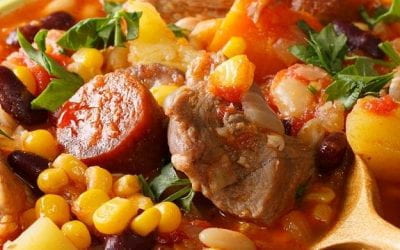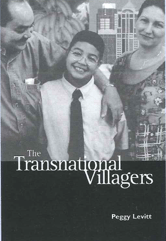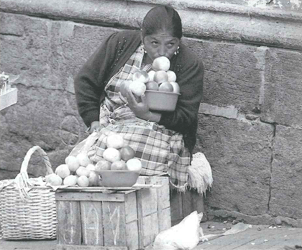The Perils of Eating Feet
The Transformative Power of Trying
I was 19, in love, and eager to gain the acceptance of my boyfriend Guillermo’s family in the mountains of Imbabura, Ecuador.
We sat around the table, smiling, and trying to make each other feel comfortable, motivated by our common love for their 24 year-old son. Colombians from Ipiales, living in Imbabura, Ecuador among Otavaleno Indians, the Acostas understood the difficulties of adaptation. While friendly, this dinner was shrouded in paternal warnings (“una gringa y un gato es igual, ingrato”) and maternal tests. With soup bowls in front of us, we began to eat. This was a family recipe, Guillermo’s sister explained, a delicacy.
Somehow, it smelled familiar, but I couldn’t quite place the aroma. Suddenly, I was whisked back to my New England childhood suburban kitchen, to the smell of a Pennsylvania Dutch delicacy, an old family recipe that evoked for my mother the memory of the Allegheny coal mining community she had left years before. Throughout my childhood, I had refused to even taste “pig’s feet pie.”
Now, here I was in Ecuador, ladling spoonfuls of broth from around the white calf’s hoof standing in the center of the plate. As I glanced around, I noticed that the other plates contained only a fragment of hoof from which Guillermo’s parents, sisters, and brothers extracted a soft whitish substance. I tried to watch them out of the corner of my eye to figure out how they had cracked the hoof open. With a dry bowl now in front of me, I began gingerly tapping the side of the hoof with my spoon. Everyone respectfully ignored the sound and continued eating. Confused, I turned the hoof over, desperately searching for a possible opening. Finding nothing, I picked up my fork, as I had seen the others do, and -to my downfall- my knife, and began to saw. The table fell silent, spoons and forks stopped in mid-air. I looked up to find every set of eyes blankly staring at me. Someone, finally, mercifully, and matter-of-factly stated: “That might take a while.” The entire group burst out laughing. Aware that calf hoof soup was not common fare in the U.S., no one had ever expected me to want to eat the marrow. They believed that in giving me the whole hoof they had spared me the embarrassment of declining. They were wrong. The hoof was so hard, it had to be split with an ax. Once the commotion subsided and tears of laughter wiped away, we resumed eating with a new level of comfort, for in some way it was now understood that although I would never be successful in my efforts in their home, I had tried.
Spring/Summer 2001
Jennifer Burtner is the DRCLAS Brazil Studies Coordinator.
Related Articles
Cachupa
Isabel Ferreira, known around the Harvard community as the language instructor who teaches Portuguese for Spanish speakers, is used to crossroads. Born in Portugal, she moved to…
The Transnational Villagers
It is commonplace today to speak of the “Global Village”. The growth of technology such as the Internet, cheap international phone service, faxes and satellite television shrink the distance…
Food in the Americas
People give food meaning. It’s easy to trivialize, because food is everywhere. But love of food is love of life…




